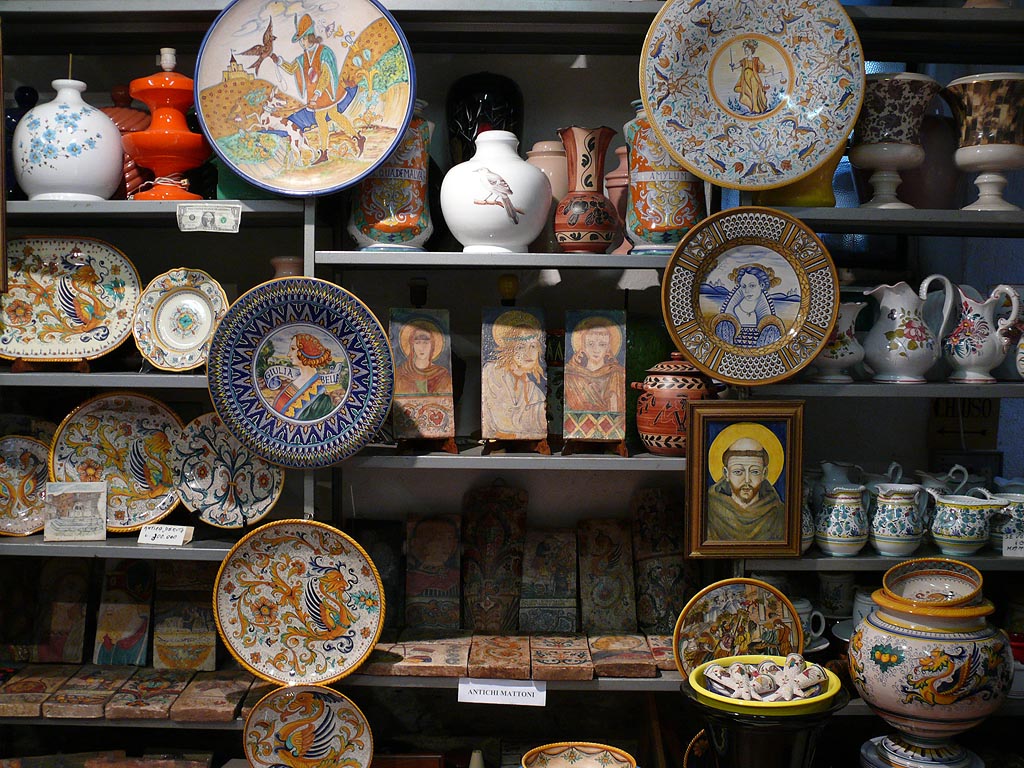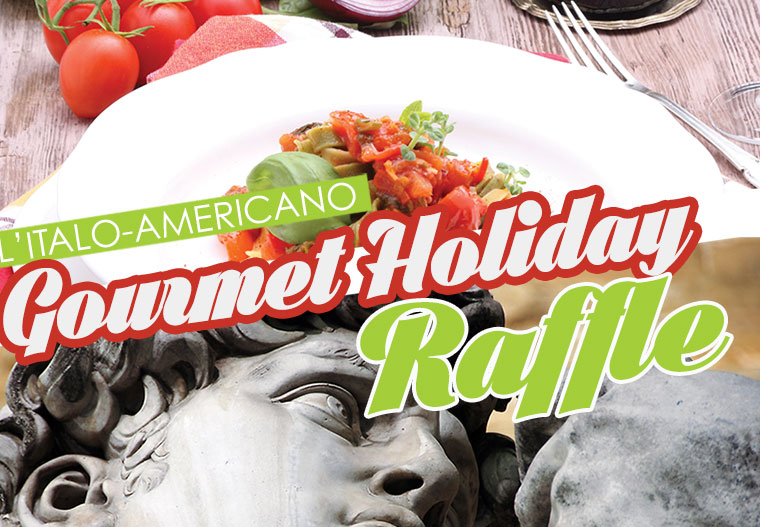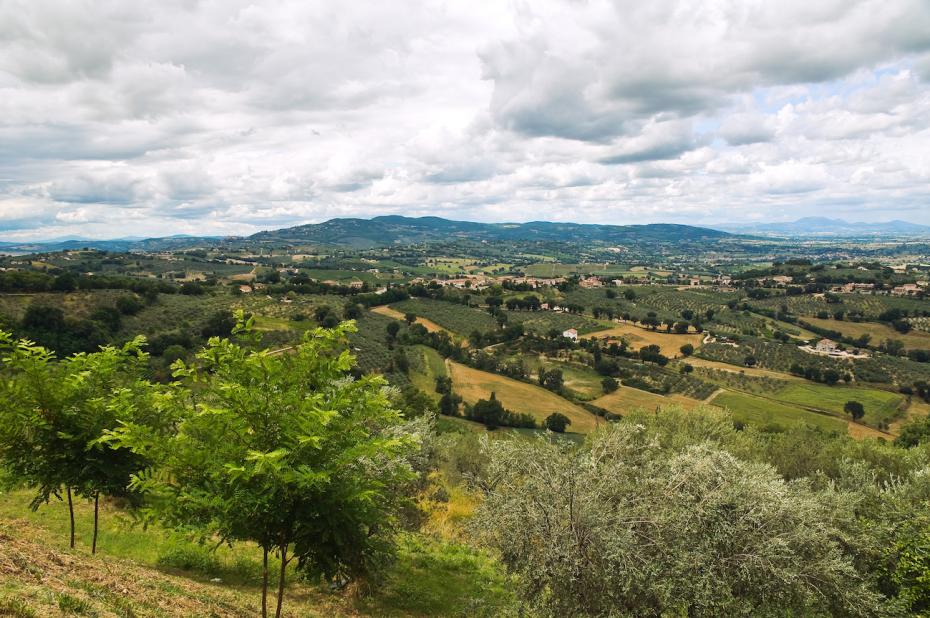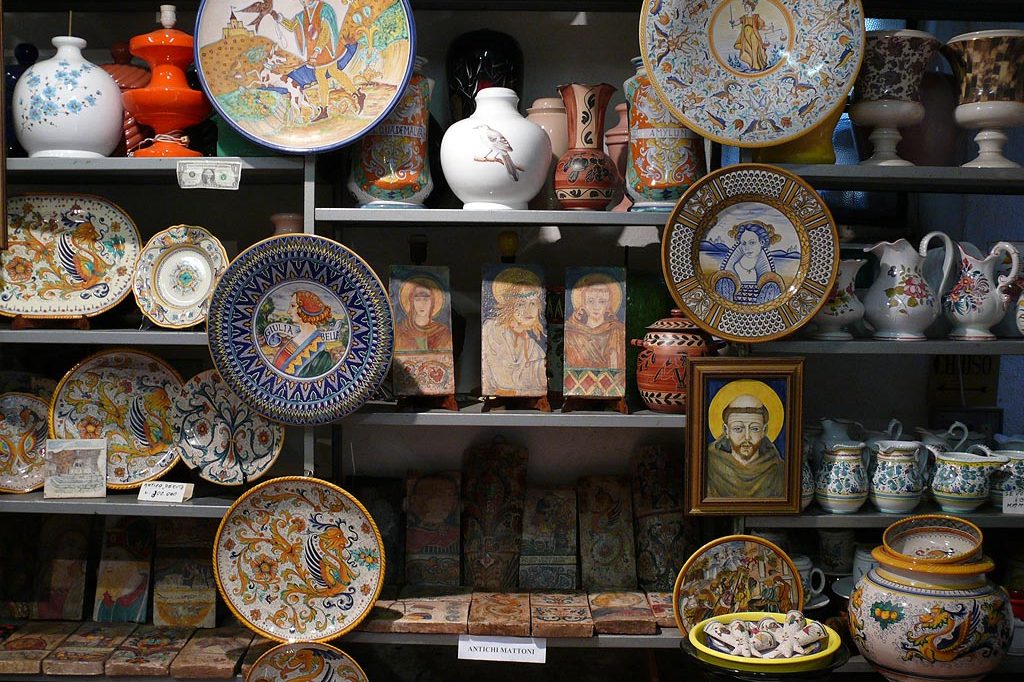I have always loved ceramic ware. I grew up with the vibrant colors and hand painted decorative designs around me and my attraction to and weakness for it has never diminished… It’s even more special when you meet or visit the talented artisans who have created your pieces and during a recent visit to Deruta in Umbria, we were fortunate to enjoy one of those special visits. In case you didn’t know, Deruta has long been renowned for its superb earthenware or, more specifically, majolica…
What is Majolica? (Also spelled maioliche or maiolica, pronunced may-oh-lee-ka) Majolica is earthenware that has been fired twice. The technique originated in the Middle East in the 9th century and, by the 13th century, was brought to Italy via the Isle of Majorca. Majorca was a trade center between Spain and Italy and the Italians called the earthenware Maiolica thinking it was made in Majorca. Enamored with this new process and the brilliant colors, they copied and adapted it. Incorporating their own creativity, Italian majolica quickly became popular during the Renaissance, particularly throughout central Italy.
At one time the clients were noble families, the church and convents while today majolica is commissioned by individual clients (George Clooney had his wedding dinnerware designed and created here – see below right) and found in high end retail stores (e.g., Tiffany & Co., Neiman Marcus, etc.).
An Umbrian Tradition – A Grazia Tradition
Official records show majolica manufacturing in Deruta during the second half of the 13th century. The production of majolica by the Grazia family dates back over 500 years. Over the centuries, with some obvious concessions to modernity, the same techniques and dedication to the craft has been handed down from generation to generation, father to son… From sourcing the clay from nearby quarries in the Umbria hills to shaping the forms, firing, hand painting and presentation in their lovely showroom, the Grazia family continues to carry out every of stage of the entire process in-house.
The Technique
The techniques for producing majolica have remained the same throughout the centuries. At Grazia, every step is executed by hand by their own artisans. After the clay is prepared by hand it will be made into shapes/forms in one of three ways: using a potter’s wheel; manually formed using plaster cast molds; or, for more complicated pieces, liquid clay is poured into plaster-cast molds. The forms are then allowed to dry out for approximately 20 days. Each piece is hand finished and detailed before it is fired in kilns at 1020 degrees centigrade. Now the pieces are called “bisque”. The bisque ware is then dipped into a mineral oxide bath which covers the porous terra cotta. This provides the required base the special glaze colors, also mineral based, with which they are hand-painted. he patterns are then applied to the bisque ware using an old technique called “pounce”.
The pattern, in the form of a stencil, is pierced with very tiny holes. Then a cotton ball with very fine carbon is gently applied transferring the design to the piece. (The carbon burns off during the second firing.) Using very fine brushes, depending on the design, the artists then carefully follow the lines and then finish painting the design.
Once painted, pieces are sprayed with a special liquid glass before being fired at 930 degrees centigrade for a second time. It is here that we can appreciate the luster and beauty of majolica. It is this process and dedication to time-honored techniques that guarantees the traditional vibrant colors and deep glaze which are the hallmarks of genuine majolica and the perfection which the Grazia family is known for.
While firmly grounded in tradition and faithfully producing centuries old designs, they continue to seek antique designs to add to their collection as well as supporting modern artists and designs…
































